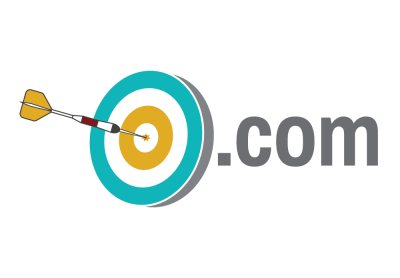How to Choose a Domain Name for Your Website
by Kristin Brighton on September 19, 2017
It’s pretty darn hard these days to come up with a good domain name, or URL. The fun part is brainstorming different ideas, spinning off on tangents and variations. But when you start narrowing your list down to fit your business and make all the stakeholders happy, well, then it can start to get a little frustrating. Plus, you have to make sure someone else hasn’t already thought of and purchased it. Cue the headaches.
There are a LOT of URLs already in use — and many more that people have bought, but aren’t using (called “domain squatting” in the biz).
I recently worked on a website-naming project. Finding the perfect domain name took forever because:
- It was an internet business and the company name and URL needed to match and be memorable to establish strong name recognition;
- It had to match the tone of the business. URLs today are a part of a company’s branding and are every bit as important as your logo and color palette;
- Every single company name the client wanted was already taken.
(Cue the sobbing, hysteria and hair pulling…my own, not the client’s!)
We eventually landed on a URL everyone is now gaga over, so the time was well spent. However, this process reminded me of some valuable lessons I’d like to share to keep you from pulling your hair out.
1. If you’re forming a new company, go through the naming process and URL search simultaneously.
If you don’t, you’ll fall in love with a company name and maybe even pay for a beautiful logo, only to discover that someone else already owns the URL — and that can lead to lost time, money and heartache. (And if you’re thinking of launching a company without a website, think again.)
2. If your business is up and running, and you’re just now creating a website for it, find a URL that’s very close to your company name or a logical abbreviation for it.
If it’s impossible to find a URL that works, and you already have too much name recognition to change your company name, then consider what you can add to your name to make the URL distinct, such as a geographic identifier like your city (redbrickkennel-nyc.com) or a business abbreviation (-co for corporation, -llc for Limited Liability Company, etc.). Whatever you do, don’t let your URL get too long! (See #8.)
3. Start with keyword brainstorming.
Come up with a list of keywords related to the work you do and the product or service your audience will be searching for. Include unique characteristics that make your business stand out and differentiates you from the competition — your philosophy, approach, technology, interesting or memorable characteristics of the owner(s), the city or region you serve, your building, favorite color or even a mascot. Keep generating ideas until you’ve got a list of 20-40 keywords.
4. Enter your keywords in a domain name generator.
This is actually a lot of fun. You can test your names quickly — plus get thousands of ideas for available URLs with similar keywords that you might not have thought of.
There are a lot of generator tools out there, and they all work a bit differently. I’ve found these three to be particularly useful:
5. Comparison shop.
Many of these generator sites will allow you to buy a domain name through them — but they often charge a mark-up. If you’re feeling charitable and want to help these sites recoup their development costs, hats off to you. Or, you can head over to a domain registrar like GoDaddy or Namecheap and buy URLs through them at a lower rate. Registrars will also show you all of the different extensions for that same domain that are available, and you can easily buy all of them all at once.
6. Stick with .com.
If you can’t find a URL with the .com file extension available, and you do business in the United States, keep looking. In the early 2000s, I worked for a small company that couldn’t buy its name as .com, so thinking they were following a new trend, they bought a URL with a .cc file extension. This caused a ton of grief and lots of bounced email. While you can buy almost any name if you’re willing to go with crazy extensions like .xyz or .online, these extensions can make your site seem less legit to American audiences.
7. Consider buying a few other common extensions to protect your brand.
Despite #6, it can be good to CYA with some more widely accepted extensions like .net or .biz. Also consider extensions for other countries you do a lot of work in (or plan to in the future) like .uk or .cn. There’s nothing stopping your competitors from buying your domain name with a different extension, so protect yourself. Once you own the other extensions, you can set up redirects to point to your real website (the .com one), so that no matter which URL someone uses, they’ll find you — not another site with almost the same name.
Keep in mind that the more extensions you buy, the more your renewal costs will be. While it’s only $11.99 to secure most domains on GoDaddy.com, it can add up to quite a chunk of change every year if you buy every possible extension.
8. If you have a number in your URL, buy both versions.
If you use “4” as “for” in the URL, buy both versions and redirect so people who type it either way will find you. Same with subbing letters for words, like “R” for “are.”
9. Don’t let your URL get too long.
Your audience is more likely to remember a shorter, catchier URL. Plus, they’re less likely to make mistakes when entering said shorter, catchier URL — especially on mobile devices!
And, it will annoy the bleep out of you if your URL doesn’t fit on business cards, if it forces weird line breaks in copy or if it takes forever to spell out to someone. See if you can keep it to 20-ish characters made up of real words so you don’t have to spell it out all the time.
10. Avoid buying premium URLs.
When I was searching for the perfect name for this client, some strong contenders came with hefty price tags — as much as $19,000! Domain registrars will help you put in a bid for a premium URL, and you may be able to buy it. But ask yourself if it’s really that perfect. A URL with a price tag of $250 may be worth it, but $2,000? In most cases, there’s another name that will work just fine for $11.99 — if you’re patient and keep thinking and looking.
11. Do your due diligence.
If you’ve got a frontrunner or two, ask your most immature friends if they can think of anything particularly dirty or sinister it could mean. (Unless that’s the type of thing you’re into.) Check Urban Dictionary. Scrutinize whether combinations of words have unintended implications. I’ve seen URLs where the different words combined end up forming curse words, body parts or sexual acts. Once you know they’re there…you can’t unsee them.
Also, it’s a good idea to Google the URL (or any phrase you’re considering for a name) to see what sort of company you’ll keep in search engine results. If a link to Urban Dictionary appears high in your search, cross that possibility from the list.
12. Once you’ve found a URL that seems to pass all the litmus tests and is available, don’t dally — buy it!
You can always purchase a few URLs for one year at $11.99 and later choose the one you really want to use for the next decade. Heck, maybe someday you’ll be able to sell the others you bought for $19,000!
13. Secure it for the long haul.
How long should you register your domain for? Most names are fairly inexpensive, and it’s a pain to have to renew them all the time (a year just seems to go by faster and faster the older you get). Unless it’s for a short-term proposition or you are covering your bases, buy it for as long as possible (like 10 years). It will save you time, money and hassle not to have to worry about it every year.
If you lock in the URL for a decade, make sure you set reminders to keep the email address, phone number and credit card numbers up-to-date. Over 10 years, it’s easy to forget you ever bought a domain name, let alone that you’ll need to renew it someday. Once you hit your renewal date, if you haven’t paid, the registrar will shut off your site until you get in touch with them. At that point, your hard-earned brand is up for grabs by anyone.






